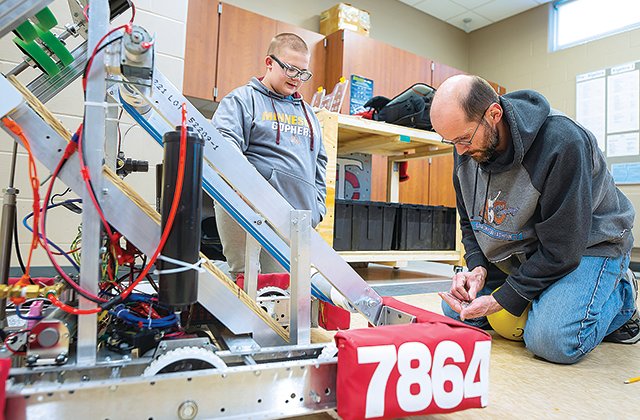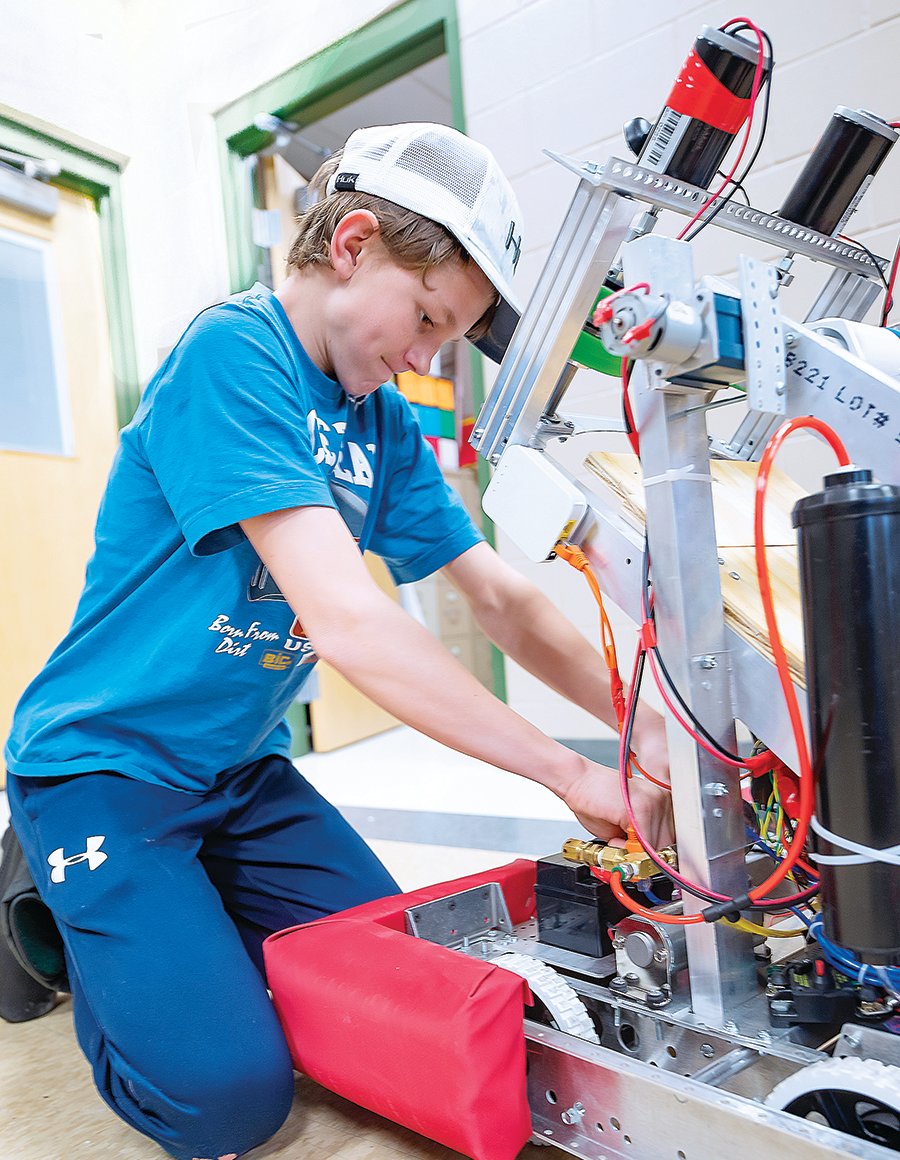Support the Timberjay by making a donation.
A lesson in robotics
Young Grizzlies team tackles big time competition
FIELD TWP— While the North Woods School basketball season is winding down, there’s another team here scoring goals with balls— they just can’t use their hands to do …
This item is available in full to subscribers.
Attention subscribers
To continue reading, you will need to either log in to your subscriber account, or purchase a new subscription.
If you are a current print subscriber, you can set up a free website account and connect your subscription to it by clicking here.
If you are a digital subscriber with an active, online-only subscription then you already have an account here. Just reset your password if you've not yet logged in to your account on this new site.
Otherwise, click here to view your options for subscribing.
Please log in to continue |
A lesson in robotics
Young Grizzlies team tackles big time competition
FIELD TWP— While the North Woods School basketball season is winding down, there’s another team here scoring goals with balls— they just can’t use their hands to do it.
It’s the robotics team, an extracurricular group in its second year of competition under the direction of math teacher and coach Travis Leinonen.
Students from seventh to twelfth grades can participate, and last year’s team was heavily laden with upperclassmen. This year’s team, however, is decidedly younger.
“Most of our kids are seventh and eighth-graders,” Leinonen said. “We have a couple of upperclassmen, but most of them already have jobs so they’re only able to come periodically.”
It’s a different challenge for Leinonen as he works with a young team to participate in the FIRST Robotics Competition geared for freshmen through seniors.
“When it was seniors like I had last year, it’s a lot easier to articulate their ideas and draw up a design,” Leinonen said. “For seventh and eighth-graders it’s a lot more difficult. They have fewer tools in their toolbox.”
Their task is to design, build, and program a robot that can collect seven-inch foam balls and drop or shoot them into three goals of varying heights. The 131-page FIRST competition manual has 36 pages devoted just to rules for robot construction, yet it allows for a wide range of creative configurations.
The North Woods robot, built on a square, wheeled wooden frame, is designed to roll up to a ball and capture it using a motor-driven polycord conveyor that pulls the ball onto a slanted ramp. It can hold four balls and shoot them at higher goals or open a trap door to drop them in a lower one.
“We call it the McEaterson because it eats balls,” seventh-grader Ethan Ploof said. “We started working on this in January. Building the robot was a lot more fun than coding.”
Seventh-grader Jimi Dutton got interested in robotics when he tried racing against last year’s robot in gym.
“Just racing it is fun, but I found it could go 20 mph and there’s no way I could run that fast,” he said.
Like Ethan, Jimi has taken a keen interest in the robot’s construction, and clearly liked coming up with ideas and figuring out if they would work.
“The first thought was to have an arm that would reach out across the base to pick up the balls, but that wasn’t a good solution,” Jimi said.
The robot is remotely operated by students using a joystick controller that communicates with the robot via a Wi-Fi connection. All the code that directs the robot has been created by team members using a student version of LabVIEW, a graphical programming environment used by millions of scientists and engineers. Students make choices from hundreds of pre-coded simple commands that they decide how to connect and sequence in order to perform complex robotic operations.
With experience from last year’s team, eighth-grader Dylan Leinonen has been the primary coder.
“It’s kind of fun to play around and see what the robot can do when you change the different variables,” he said. “We could shoot that ball much further because it’s set for only 80 percent speed.”
A recent scrimmage with 15 schools at Itasca Community College gave Dylan an opportunity to get some experienced assistance.
“I needed some help with the code, and we found a guy there to help me get it done and learn more,” Dylan said. “He graduated last year; he was from Deer River’s team. He could do it in half an hour. It took me like 10 hours to do nothing.”
Such assistance is what sets robotics apart from activities like sports, Travis Leinonen said.
“FIRST stresses gracious professionalism in all that they do,” he said. “It’s more about cooperation and collaboration than competition. That’s a big mindset change for some of our kids because they have to learn that when you win that doesn’t mean you brag about it. It means you go over to the other team’s pit and say, ‘Hey it looks like you may need some help with your electronics, we can help you with that.’ That makes everybody better.”
There were two simultaneous FIRST regional competitions at the Duluth Entertainment Convention Center last weekend with 123 teams. North Woods competed in the 63-team Lake Superior regional.
Contestants are grouped in teams of three robots that compete against three other robots. Teams are switched every round, so robots that competed against each other in one round could be teammates in the next.
“The team came down with the flu, so we had to change drivers a few times which affected our final standing in a few of our matches,” Leinonen said. “Overall they were troopers and the robot performed well. We were blessed with great family support and saw representatives from some of our season sponsors in the pits at the event. We were 32nd out of 63 teams and are definitely the youngest team in the tournament.”
The team will have another shot at qualifying for the FIRST world championships in Detroit when they compete next week in a Milwaukee regional.
The lessons learned through robotics will serve students well when they eventually enter the workforce, Leinonen said.
“You can’t be the type of person who backs away from a challenge,” he said. “You’re going to have problems and you’re going to have to work them out. If you go towards problems you’re going to become a leader.”
Leinonen has explored possibilities for incorporating robotics into the school’s curriculum, but for now he’s intent on finding ways to build interest in the activity, particularly among elementary students.
“You drive that robot down the hall during school and three-fourths of the heads are turning,” he said. “They want to know what that light flashing means, what this or that is doing, and why you put all those zip ties on there. They’re interested.”
He would also like to recruit volunteers to help with the team.
“I’d like to see another person or two from the community step forward who has expertise in mechanical engineering, or is just a good handyman,” Leinonen said. “There are a lot of people in the community who either work in the woods or work in the mines or elsewhere that have seen a ton of stuff that can bring amazing perspective.”
“If you know how to operate a screwdriver, you’re qualified.”









